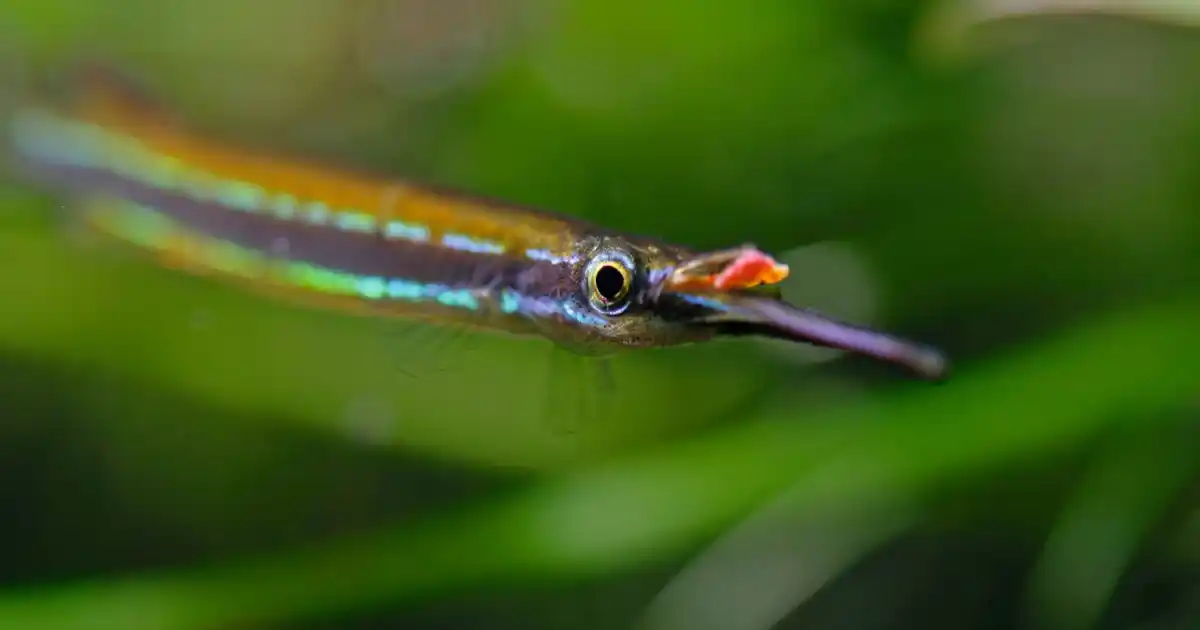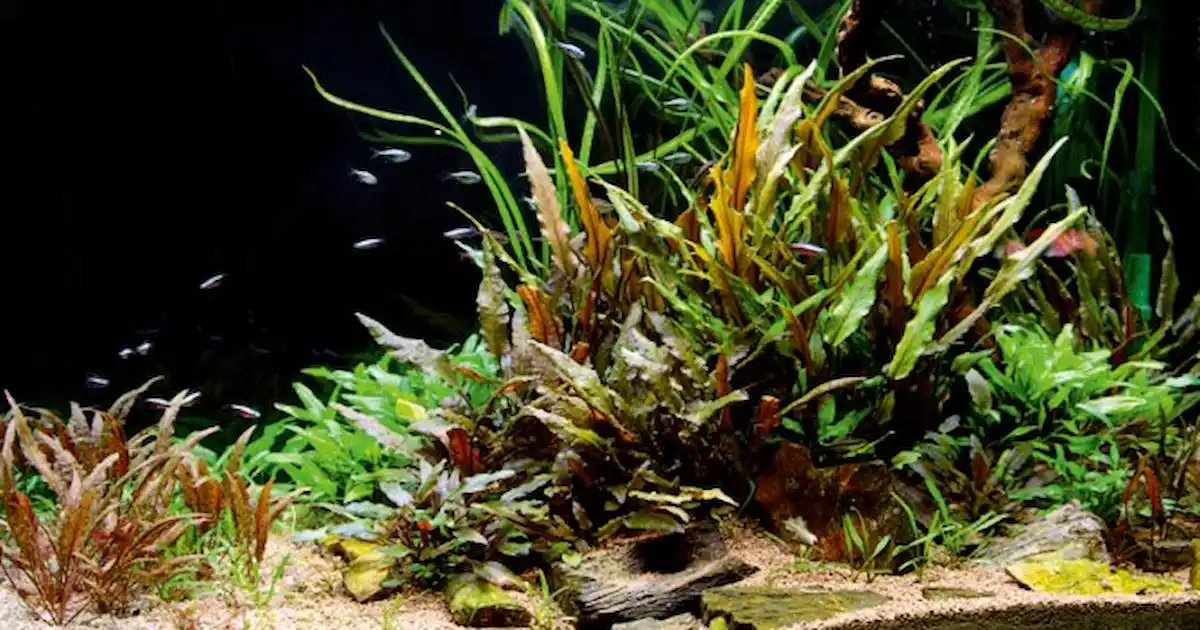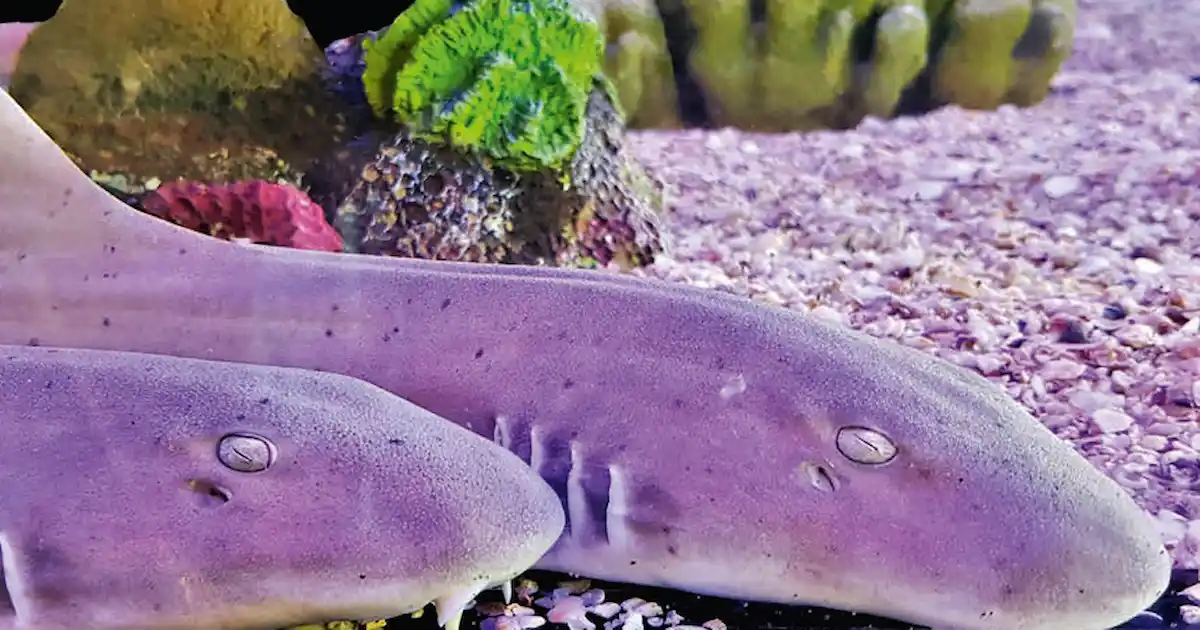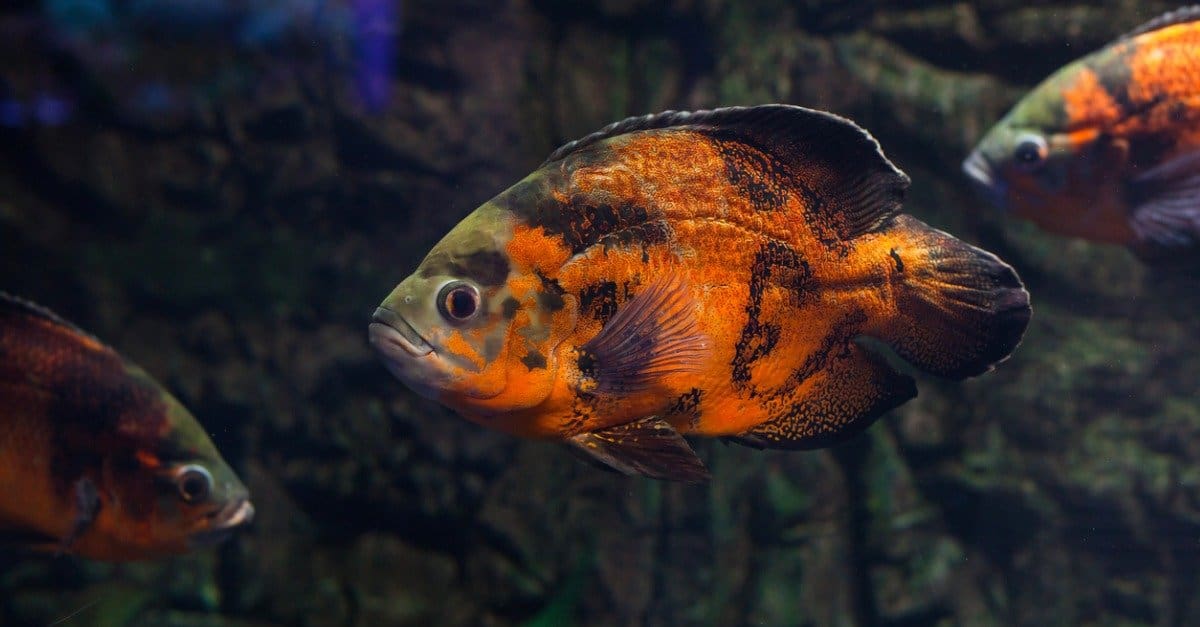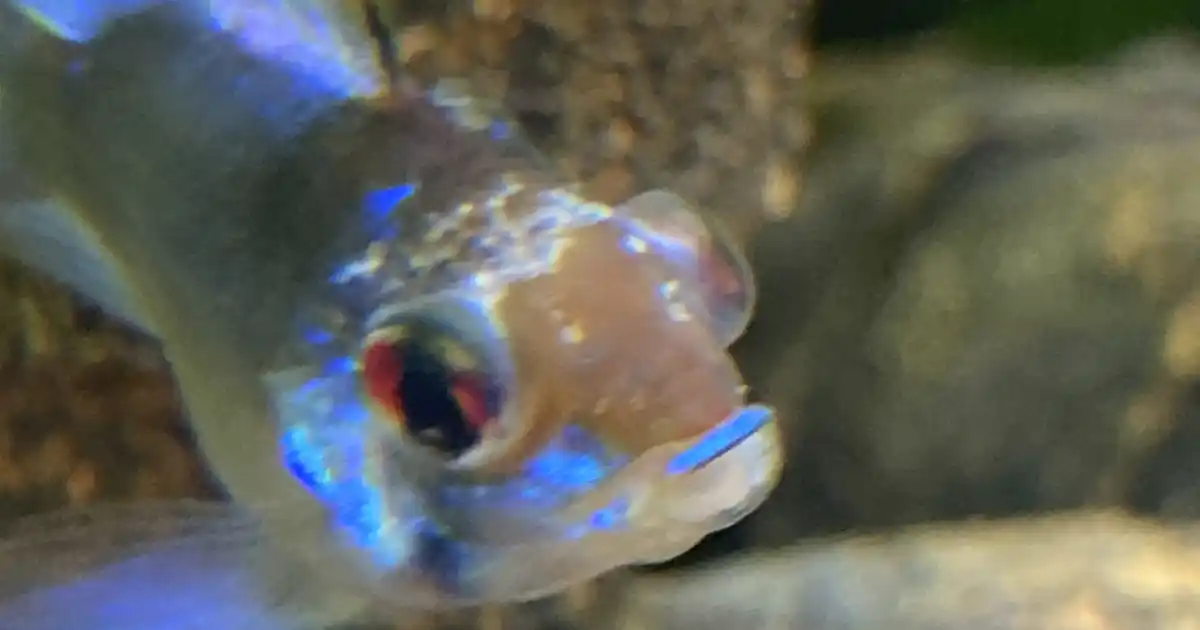Words by Alex Bell
Like many aquarists, my exposure to halfbeaks has been limited to very few encounters, and all of those were with just one species: the wrestling halfbeak, Dermogenys pusilla. Fans of this species will know it as a fish that’s highly tolerant of water chemistry, from stagnant freshwater ditches to flooded brackish mangroves. Although still very much on the uncommon side, I had at least seen them in a few shops and one friend’s aquarium.
As awesome as this species is, that is as much as I’ll write about it today. Instead, my focus is on a fish slightly more suited to my usual water chemistry, and certainly a fish less often seen.

I began planning a new tank almost half a year before I could actually get it filled with water. This gave me far too much time to dive into rabbit holes online, researching different habitats to inspire myself. My criteria were straightforward: to utilise botanicals and live plants in combination to produce something aesthetically pleasing, but that combination also had to function like something in nature.
While researching Borneo biotopes, where Cryptocorynes and Bucephalandra grow wild and leaf litter dominates, I discovered that there were more species of halfbeaks than I ever knew existed. Furthermore, all of the species located in the three genera (Hemirhamphodon, Dermogenys, and Nomorhamphus), found within the family Zenarchopteridae, are viviparous. In viviparous fish, or livebearers as many of us will know them, embryos develop within the female and fully formed fry are birthed (just like the livebearers in Poeciliidae—the guppies, platies, mollies, and more). But there’s one exception— the Borneo redline halfbeak (Hemirhamphodon tengah).
Despite Borneo Redline Halfbeak (H. tenagh) not giving birth to live young, it has been observed that the eggs laid by the females are already fertilised when released. The stage of development at the point of release is still unknown as no consistency to the eggs collected have been recorded.
Interestingly, it is also thought that the sperm transferred to the female during copulation is not immediately used for fertilisation, with the female starting to swell with eggs many days after the event—which could contribute to why there is no consistency to the stage of the eggs upon released.
A study analysing the distribution of life history traits within Zenarchopteridae suggests that the viviparity prevalent across the three genera comes from one common ancestor. Yet an important question remains unanswered. Has H. tengah managed to retain a primitive trait whilst evolving alongside the rest of the genus, or has the species evolved back from live bearing to oviparity?
In my rather uneducated opinion, it is more likely that each of the three genera diverged from the shared ancestor, before the descendants of this ancestor split into the species that we see today. This seems somewhat more plausible than H. tengah splitting off before evolving viviparity, yet developing the same traits as the rest of the Hemirhamphodon spp. Either way, the benefits for this one species not to carry their eggs for the duration of incubation, and the environmental pressures that may have brought it about, remain unclear.

Despite their small maximum size of 5cm, H. tengah do far better in aquariums with a large footprint (or perhaps ‘surface-print’). All halfbeaks are obligate surface dwellers, rarely dropping further than a few inches from the top of their tank. In the wild, to venture away from the sanctity of any floating or marginal vegetation is to be easily picked off by predators, be they birds from above or larger fish below.
As such, they have evolved to dart away swiftly whenever there is a disturbance nearby; in the wild this takes them from immediate danger and (hopefully) into areas with some cover. In aquariums, this luxury of space is denied to them and they encounter a large sheet of glass, and when they do this the repeated collisions will damage the delicate, elongated lower jaw.

I keep a group in an aquarium with base dimensions of 100x40cm but they spent some time in a 60x30cm quarantine tank and during this time I saw numerous collisions with the tank’s sides. Still, I would imagine a tank size between the two could be acceptable.
If maintained in a limited space, there are ways to reduce the risk of collisions. Firstly, by planting tall, shade tolerant plants like Cryptocoryne balansae around the back and sides of aquarium. These will, in most cases, provide safe spaces for the fish to flee to just before they collide with glass. The presence of planting will reduce the instances of initial darting too, as the fish will feel less nervous when nestled between the fronds. Alternatively, you can paint the back and sides of the aquarium black, which will offer a visually perceptible barrier, and one the fish are able to distinguish more easily than clear glass.

This skittish nature also means they are prone to launching themselves out of the aquarium, and so as with so many nervous species, a good lid or cover glass is certainly required.
Combine a tight-fitting lid with a surface rich in floating plants to help the fish feel more secure, and where possible (and where technology allows) utilise a sunrise/sunset function to the lighting allowing it to ramp up and down gradually at morning and evening. Sudden and unexpected exposure to stark illumination or darkness is one of the key stressors in making fish jump and dart.
As always when considering a new species, you need to ascertain if you can provide the correct water chemistry for them. Living in the peat swamps of Borneo, it is a safe assumption that a soft, acidic environment would be needed. A pH below 6.5 will be acceptable but for most aquarists that means the use of reverse osmosis water will be required—this will also keep the carbonate hardness low which is also a necessity.
H. tengah is strictly a tropical species, so temperatures between 25-28°C should be maintained throughout the year without the need to mimic large scale seasonal variation.
Feeding isn’t as difficult as sometimes reported; if it floats, they will at least try it. Flakes, granules, frozen and live foods are all accepted, with white mosquito larvae being a superb choice as even the defrosted larvae will float at the surface. As soon as the food drops below a few inches from the water surface the halfbeaks will ignore it.
For tankmates (if any) you want relatively timid-feeding species, as any surface disturbance from ravenous larger fish can cause large proportions of the food to sink. In such a setting, you’ll soon find that the halfbeaks will struggle to get enough food if they are not especially settled and confident.
At the other extreme, smaller fish may be at risk of being snapped up by the halfbeaks themselves, with diminutive surface dwellers particularly at risk. So, there are already some restrictions on potential tankmates before we even consider their need to also thrive in soft, acidic conditions.
A good option for such a niche species is to look at what is biotope correct. Fortunately, many gorgeous fish also call these swamps home and make great companions. Species of the genera Parosphromenus, Sphaerichtys are calm additions, yet large enough to avoid becoming dinner. The Boraras spp. can be considered but ensure they are large and mature individuals as the small ones, just after being imported, could be at risk. The six banded barb, Desmopuntius hexazona, can be a little boisterous, but as long as the halfbeaks have had ample to time to settle before the barbs are added, they should be able to compete for enough food to thrive together. A better choice still—calmer, although not found on the same island—is the lambchop rasbora, Trigonostigma espei.
The courtship of H. tengah is well detailed by Dorn and Greven (you can read the paper, as well as see the excellent courtship diagrams at tinyurl.com/47j793z8), but as I have not witnessed the full process yet I cannot go into any more personal details. That said, my observations of the process so far match up with the reports in this study.
Initially, a male defends a territory at the surface and when a female is attracted, he will perform a courtship dance moving from the left of the female to the right and back again, always staying behind or next to her. With some beating of the male’s anal fin against the female, sperm is transferred to the genital pore which can be stored for an unspecified time prior to fertilisation. The female will deposit the eggs in a safe area, typically in dense plant growths near the surface.
Reports from other hobbyists show that they prefer to lay eggs in tightly wound sections of woollen mops around the mop’s floatation device, rather than within the longer strands. The only eggs I have found were located in floating stems of Limnophila sessilflora.
The one egg that successfully hatched occurred on the 18th day, but I do not know how long it was laid before I found it, or what stage it was at. I unfortunately did not manage to get the individual to start feeding and lost it soon after, despite offering a mixed diet including live freshwater copepods, baby brine shrimp and rotifers as well as some floating prepared fry diets (which were offered as a last resort). I now have a culture of vinegar eels which I hope the movement and affinity to the meniscus may aid the young halfbeaks to feed, I now just have to find the impossibly difficult to see eggs again.
Scientific name: Hemirhamphodon tengah
Pronunciation: Hem-ee-ram-fo-don-ten-gah
Size: To 5cm
Origin: Southern Borneo
Habitat: Densely vegetated blackwater peat swamps
Tank size: 90x30x30cm
Water requirements: Soft and acidic water; aim for 5.5-6.5pH, 0-8°H, <2°KH
Temperature: 25-28°C
Temperament: Peaceful but nervous species, not for a general community
Feeding: Strictly takes floating foods, consider frozen white mosquito larvae and small insects as well as flakes, crisps and floating pellets.
Availability and cost: Rare to find in shops but available from specialist shops, starting from around £7 each
Company Registered in England no. 2572212 | VAT registration No. GB 638 3492 15
Copyright © Warners Group Publications Plc
